°
INHOUD G → zie onder Geologie /PALEONTOLOGIE
°
← INHOUD O/P / PALEONTOLOGIE
—> DINOSAURICON B
°
EXTERNE LINKS & bronnen
–> Nederlands
http://www.fossiel.net/information/article.php WOORDENLIJST
°
–> English
http://palaeos.com/paleontology/glossary.html
A | B | C | D | E | F | G | H | I | J | K | L | M | N | O | P | Q | R | S | T | U | V | W | X | Y | Z
°
Paleontological glossary Choose the first letter of the the term you’re interested in: | A | B | C | D | E | F | G | H | I | J | K | L | M | N | O | P | Q | R | S | T | U | V | W | X | Y | Z |
°
_________________________________________________________________________________________________
°
BAARDWORMEN /
Baardwormen = (Pogonophora ) –> Siboglinidae //
ook bekend als baardwormen, is een familie van borstelwormen uit de orde van de Sabellida
. In het verleden werd Pogonophora binnen het dierenrijk als een aparte stam onderscheiden –> is nu onderdeel van de familie siboglinidae
http://nl.wikipedia.org/wiki/Categorie:Borstelworm
http://www.marinespecies.org/aphia.php?p=taxdetails&id=129096
Wikipedia

http://www.bumblebee.org/invertebrates/POGONOPHORA.htm
Pogonophora books.google.be/books?isbn=3110006510 – Karl E Johannsson – 1968
Afbeeldingen van siboglinum
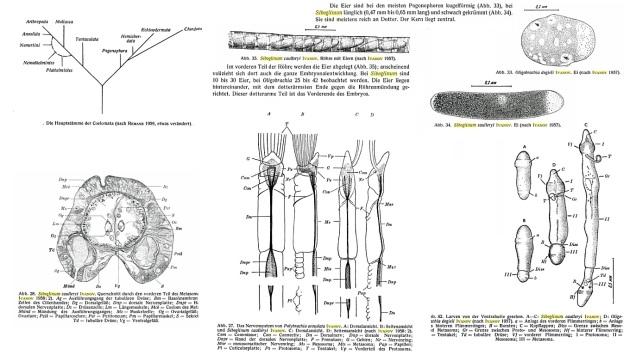

A colony of tube worms, some as long as 1.5 m, clustered around an ocean floor hot spring. (Photograph by Daniel Fornari, Woods Hole Oceanographic Institution.) Visueel vergelijkbare afbeeldingen
°, Kolonie van reuzenkokerwormen , waaronder enkelen 1.5 m groot kunnen worden .rondom een vulkanische diepzee schouw
°
. Volgens de meest gangbare verklarende hypothesen is onderstaande concretie : een ” ichnofossiel” dat wijst op de “Pogonophora” of de “baardwormen.”


(Antwerpse schelde zanden en brakke schorren )
http://scheldeschorren.be/cms/vroeger-en-nu/galgeschoor/tasselia-ordamensis
http://scheldeschorren.be/cms/index.php?page=tasselia-ordamensis
Species : Tasselia ordamensis
In 1965 publiceerde R. Van Tassel van het Koninklijk Belgisch Instituut voor Natuurwetenschappen te Brussel een wetenschappelijke bijdrage over deze concreties:
Merkwaardige konkreties in de Pleistocene mariene afzettingen van Antwerpen, verslagboek van het 4e Internationale havencongres, Antwerpen 1964.
” ….Deze konkreties werden opgemerkt tijdens de graafwerken van de Boudewijnsluis, het zevende havendok, het kanaaldok B1 en de Zandvlietsluis. Ze zijn bijzonder talrijk in de streek van de Ordampolder te Oorderen; meer bepaald ten zuiden van het Fort van Oorderen ongeveer waar zich nu de oostelijke spooroprit van de Lillobrug bevindt.
Tasselia werd beschreven in de Zanden van Merksem (Ordampolder bij Antwerpen, Oud-Pleistoceen), maar werd ook herkend in de Zanden van Oorderen (Plioceen) en de Zanden van Deurne (Boven-Mioceen) De concreties in die laatste zijn meer uit zandsteen opgebouwd i.p.v. ijzercarbonaat (sideriet) en calciumfosfaat (apatiet).
.
Hun afmetingen zijn sterk uiteenlopend: lengte van 3 tot 30cm, doormeter van 2 tot 10cm en met een gewicht tot 4kg.Deze konkreties staan bijna allen uitsluitend rechtop. Ze komen alleen en groepsgewijs voor, in het laatste geval zijn ze soms samengegroeid met 15 stuks of meer. ”
Wanneer deze konkreties aan verwering blootgesteld worden, dan vallen ze uiteen in schijfjes. Hierbij valt dan heel duidelijk de centrale buis op. Deze centrale buis is scherp omlijnd, heeft een diameter van +2,5 mm. Deze buis verloopt rechtlijnig en heeft geen vertakkingen.

De kleur van deze konkreties is binnenin lichtgrijs en wordt naar buiten toe bruin.
Het lichtgrijs bestaat hoofdzakelijk uit calciumfosfaat (apatiet). Het donkere deel bestaat voornamelijk uit ijzercarbonaat (sideriet).
De geleidelijke overgang van calciumfosfaat naar ijzercarbonaat wijst erop dat deze knollen vroeger fosfaathoudend waren; m.a.w. ze bevatten ooit levend materiaal.
Onderaan de gevonden konkreties bevond zich steeds een platte kamer.
Fossiele kokerworm ringen
Afkomstig van wormgangconcreties
De conische structuren zijn vingerdik tot nog forser. Er is een opbouw van gestapelde ringen; vergelijk het met het Michelinmannetje).
Centraal is veelal een klein gaatje van circa twee milimeter doorsnee aanwezig.
De zandkleurige vormen zijn deels dikker en minder extreem gebandeerd; de gaatjes zijn daar verstopt. Ze zijn niet kegelvormig, maar spoelvormig



Tasselia ordamensis
Er wordt gesteld dat het gaat om de graafgang van een baardworm, behorend tot de Pogonophora. De worm zelf is echter nooit gefossiliseerd aangetroffen , alleen de sporen van het dier zijn bekend, een zogenaamd ichnofossiel.
http://www.fossiel.net/forums/viewtopic.php?TopicID=18844
°
Beklemishevites grandis is hitherto known only from an erratic boulder of the Ordovician age, found in
Pleistocene glacial deposits of Poland near Mochty (Valley of the Vistula River).
–>Is bekend van een zwerfsteen daterend uit het
(en gevonden in de glaciale afzettingen van het Pleistoceen in Polen (Mochty: vallei van de Vistula)
The holotype represents a fragment of unflattened tube, 18 mm long and 0.4 mm in diameter.
The remaining fragments vary from 1 to 8 mm in length and 0.3 to 0.4 mm in diameter. Some tubes are
strongly flattened. Tubes black, with mat, rough and unornamented outer, and smooth and shiny inner surface.SEM studies show laminar structure of the wall. However, the micrographs obtained did not give any additional information on the nature of the laminae. Electron micrographs obtained with the use of TEM clerly show that the laminae are built of characteristic parabolic fibres, forming the so-called “Bouligand pattern”. This suggests that the tube of B. grandis was built of chitin-protein complex. The total tube length of B. grandis remains unknown but it may be assumed that they were about dozen or so cm long.
(The Recent species Siboglinum cinctum Ivanov is characterized by tubes of a similar diameter, 0.3-0.4
mm, and up to 15 cm long.
–> De vrij recente species siboglinum cinctum Ivanov bezit kokers met een gelijkaardige 0.3-04 mm diameter en kunnen tot 15 cm lang worden )
SEM micrograph displaying lamellar structure
of the living tube of Beklemishevites grandis.
From P. Mierzejewski.
A “Bouligand pattern” made of chitin-protein
complex in the living tube of
Beklemishevites grandis, as seen in
transmission electron microscope.
__________________________________________________________________________________________________
Background extinctions –> are those extinctions that occur continually throughout time. These extinctions are caused by small changes in climate or habitat, depleted resources, competition, and other changes that require adaptation and flexibility. Most extinctions (perhaps up to 95 per cent of all extinctions) occur as background extinctions.
_________________________________________________________________________________________________
°
BACTERIA Bacteria are one-celled, microscopic organisms that live all over the world. They are important in the decay of organic material and in the fixing of nitrogen.
bacteriën
°
Bactrites worden beschouwd als voorlopers van de Ammonieten.Goede gidsfossielen
Bactrites is een uitgestorven geslacht van weekdieren, dat leefde van het Ordovicium tot het Perm.
Deze koppotige had een in doorsnede afgeronde, rechte en slanke schelp met een ventraal gelegen sipho. De suturen (naden tussen verschillende windingen) waren zeer eenvoudig en hadden een kleine ventrale lob. De lengte van de schelp bedroeg ± 3¾ cm.
http://en.wikipedia.org/wiki/Bactritida
Bactrites, genus of extinct cephalopods (animals related to the modern squid, octopus, and nautilus) found as fossils in marine rocks from the Devonian to the Permian periods (between 408 and 245 million years ago). Some authorities have identified specimens dating back to the Silurian Period (beginning 438 million years ago), but their classification is uncertain. The shell consists of a linear series of chambers, each successively occupied by the body of the animal. Bactrites fed on animals it caught in its tentacles. It is possible that Bactrites gave rise to more advanced cephalopods of later geologic periods, notably the ammonoids and the belemnoids.

Bactrites arkonensis (Whiteaves 1898). Up to 2cm. long. Found on the floor of the south pit at Hungry Hollow, On., Canada. Arkona Shale Formation,
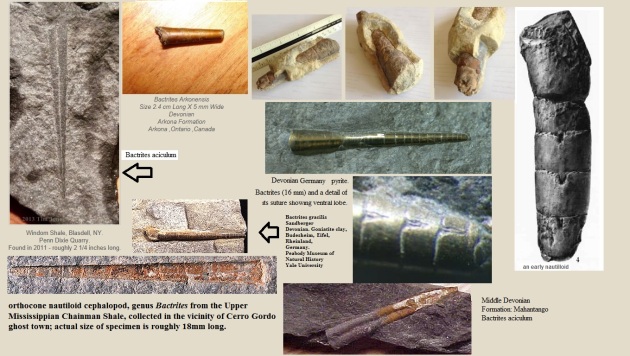
http://www.thefossilforum.com/index.php?/topic/41290-found-in-jacksboro/
http://kuscholarworks.ku.edu/dspace/handle/1808/3777
°
BACULITES Baculites (which means “walking stick rock”) was a genus of ammonite that lived during the late Cretaceous period. It was heteromorphic: in its juvenile stages it had a coiled shell; as an adult, it was straight-shelled, tube-like, and about 2 m long (but some later forms had a cork-screw shape). Baculites was a wide-spread marine cephalopod mollusk that may have lived in colonies on the sea floor. Baculites species are very widespread, so they are used as an index fossil. Baculites was named by the French paleontologist Alcide Dessalines d’Orbigny in 1850

Baculites is a common, straight-shelled ammonoid. These specimens are from the Pierre Shale of Logan County, Kansas. They are Upper Cretaceous in age.

The convoluted sutures are easy to see in this fossil fragment of the genus Baculites, from the Beecher Island Shale Member of the Pierre Shale in Cheyenne County, Kansas. Note the relatively large size of this Cretaceous-aged ammonoid.
 Baculites are of the class cephalopoda, which means, “head-foot”. Almost oval, their ornamentation consists of ribs and tubercles. Only the very earliest part of the shell remained coiled. The latter part grew into a straight shaft. Baculites can occur in vast numbers at some localities, often to the virtual exclusion of other species and could grow to over 39 inches in length. The mode of life of these straight ammonites is controversial. Some paleontologists believe that they lived upright in the water, with the tentacles on the seabed foraging for food. Others feel that they had horizontal orientation and lived nearer the surface of the sea. .
Baculites are of the class cephalopoda, which means, “head-foot”. Almost oval, their ornamentation consists of ribs and tubercles. Only the very earliest part of the shell remained coiled. The latter part grew into a straight shaft. Baculites can occur in vast numbers at some localities, often to the virtual exclusion of other species and could grow to over 39 inches in length. The mode of life of these straight ammonites is controversial. Some paleontologists believe that they lived upright in the water, with the tentacles on the seabed foraging for food. Others feel that they had horizontal orientation and lived nearer the surface of the sea. .


°
BALUCHITHERIUM Baluchitherium (now called Indricotherium) is a large, extinct, hornless rhinoceros. It was one of the largest land mammals. Adults were about 26 feet (8 m) long, 18 feet (5.5 m) tall, and weighed about 17 – 18 tons (16 tonnes). The skull was 4.25 feet (1.3 m) long. This herbivore ate leaves and twigs from the tops of trees. It had four teeth; two tusk-like front teeth in the top jaw, pointing down and two on the bottom pointing forwards. This extinct ungulate (hoofed mammal) had three toes on each foot and lived from the Oligocene to the early Miocene in central Asia (Pakistan, Mongolia and China). Classification: Order Perissodactyla (odd-toed ungulates), Family Hyrachyidae (odd-toed ungulates between tapirs and rhinos).
°
BARBOUROFELIS Barbourofelis (meaning “Barbour’s cat”) was a carnivorous (meat-eating) mammal, an early cat with long incisors – it was not a dinosaur. This lion-sized cat was the last of the family Nimravidae (false-saber-tooth cats) and lived during the late Miocene, about 15-7 million years ago. Fossils have been found in North America, Turkey, and Spain. Classification: Class Mammalia (mammals), Order Carnivora, Superfamily Feloidea (cats, mongooses), Family Nimravidae (false-saber-tooth cats, early cats), Genus Barbourofelis.


°Katten
____________________________________________________________________________________________________
°
BASILOSAURUS Basilosaurus was an Archaeoceti whale, a primitve, extinct whale from the Eocene epoch, 50 million of years ago.
°
Duidelijke overgansvormen werden voor het eerst gevonden onder de Basilosauridae

Basilosaurus.
——————————————————————————————————————————–
°
Batoidea
Binnen de Elasmobranchii vormen de Batoidea een superorde waarin de roggen, zaagvissen en gitaarroggen worden ondergebracht. Fossiele vertegenwoordigers zijn gekend vanaf het vroege Trias. Het zijn kraakbeenvissen, waardoor de meeste skeletonderdelen relatief moeilijk bewaard bleven. Enkel in zgn. lägerstatten worden complete specimens aangetroffen.
In de Benelux worden fossiele Batoidea voornamelijk aangetroffen in de vorm van tandplaten en huidstekels, onder meer in het Neogeen van Antwerpen en Noord-Brabant.

Complete specimens, zoals deze uit Libanon, zijn uitzonderlijk
————————————————————————————————————————————
°
BAVARISAURUS
Bavarisaurus was a small, fast-moving, ancient lizard (it was not a dinosaur) that lived during the Jurassic period. A partially digested, fossilized skeleton of a Bavarisaurus was found inside a Compsognathus (a small, meat-eating dinosaur) fossil in Bavaria, Germany
–
Afbeeldingen van bavarisaurus http://www.palaeocritti.com/bavarisaurus Bavarisaurus: Bavarisaurus macrodactylus (originally Homoesaurus macrodactylus Wagner, 1852), Range: Late Jur of Europe (Solnhofen limestone of Bavaria, early Tithonian) Phylogeny: Scincogekkonomorpha 😦Eichstaettisaurus + Ardeosaurus + (Scandensia + Liushusaurus + Scleroglossa)) + *. Comments: The only known specimen (right) reveals that these animals were among the prey of small coelurosaurs. Like Ardeosaurus and Eichstaettisaurus, Bavarisaurus was at first classified as a gekkotan, in this case on the basis of its amphicoelous vertebrae, but subsequent analyses have shown it to be a more basal form (Evans et al 2004).
–
This reptile was about 20 cm in length Link: Archaeopteryx and Bavarisaurus – Dinosaur art, Michael Skrepnick  Graphic: 1903 illustration by Franz Nopcsa showing Bavarisaurus in the stomach region of Compsognathus, public domain, from Wikipedia. MAK101106 __________________________________________________________________________________________________
Graphic: 1903 illustration by Franz Nopcsa showing Bavarisaurus in the stomach region of Compsognathus, public domain, from Wikipedia. MAK101106 __________________________________________________________________________________________________
- bedding plane: A surface separating layers of sedimentary rocks and deposits. A bedding plane marks termination of one deposit and beginning of another of different character, such as a surface separating a sandstone bed from an overlying mudstone bed. Rocks tend to breaks or separate along bedding planes.
___________________________________________________________________________________________________
Belemnoidea

De Belemnoidea vormen een uitgestorven groep binnen de subklasse Coleoidea van de Cephalopoda. Een belemniet zoals we deze fossiel vinden is een onderdeel van het inwendig skelet van deze inktvisachtige (die wel wat weg had van een pijlinktvis). Belemnieten zijn opgekomen en terug uitgestorven gedurende het Mesozoïcum en komen het meeste voor in het Jura en Krijt tijdperk.

Schematische reconstructie met voornaamste onderdelen van een belemniet

Voorbeeld van het rostrum van een Belemniet.
Doorgaans wordt enkel het –meestal kogelvormige- achterste deel aangetroffen, het zgn. rostrum. In dit rostrum bevindt zich een kegelvormige uitholling, de alveole. Hierin bevond zich bij leven een gekamerde schelp, homoloog aan de schelpen van andere cephalopoden als nautilussen en ammonieten. Bij goed bewaarde exemplaren kan dit phragmocoon aangetroffen worden. Sommige soorten bezaten als actieve jagers tentakels met puntige haken. Ook deze worden sporadisch fossiel aangetroffen. Exemplaren met bewaring van de weke delen zijn gekend uit verschillende konservat-lägerstatten, waaronder de lithografische kalksteen uit de omgeving van Solnhofen in Duitsland.

Belemniet met deel van het phragmocoon op de oorspronkelijke plaats.


Foto’s of locaties voor Belemnoidea bekijken
Belemnieten 2 
Fig.57. Belemnitella mucronata (SCHLOTHEIM), Boven-Krijt, Westfalen. (naar Zittel, 1915) Belemnieten behoren tot een uitgestorven groep cephalopoden. Ze zijn vooral belangrijk in Jura en Krijt. Belemnon = werpspeer. We vinden als fossiel gewoonlijk alleen het rostrum = het achterstuk = een deel van de inwendige schelp. Nauwkeuriger gezegd: een belemniet is het rostrum van een inktvissoort. Op een breuk ziet men in het rostrum een radiale = straalvormige structuur van calcietvezels. Het holle gedeelte aan de voorkant heet de alveole. Hierin past een ander deel met kamers van de schelp = het fragmocoon. Belemnieten komen in het Limburgse Krijt in zeer grote aantallen voor in een z.g. ‘belemnietenkerkhof’. Waar zo’n laag dagzoomt kan man ze bij honderden aantreffen. 
Fossil belemnite. Rostrum and phragmocone; normal sections of a rostrum (see the radial-concentrical structure of calcite fibers). belemniet 405075 (1) <—pdf
-
Belemnieten zijn een uitgestorven groep tienarmige inktvissen die erg veel leken op de huidige pijlinktvissen en verwant waren aan de zeekatten.
Wikipedia
Belemnieten <—Doc 
The rostrum of belemnites is the part most frequently preserved (left). At right, a long belemnite rostrum in a block containing other marine fossils. 
 Fig. 305. Belemnite restored: a, cephalic tentacles; b, siphon; e, ink-bag; d, e, section of shell. The outline exhibits the fin-like expansions of the integument. Read more: http://chestofbooks.com/animals/zoology/Anatomy/Cephalopoda-Cuvier-Part-18.html#.UtMDU3mA3cc#ixzz2qDjLuxe0
Fig. 305. Belemnite restored: a, cephalic tentacles; b, siphon; e, ink-bag; d, e, section of shell. The outline exhibits the fin-like expansions of the integument. Read more: http://chestofbooks.com/animals/zoology/Anatomy/Cephalopoda-Cuvier-Part-18.html#.UtMDU3mA3cc#ixzz2qDjLuxe0
Belemnite: a Mesozoic to early Tertiary cephalopod mollusc with an internal cone-, bullet-, or cigar-shaped shell. In life a squid-like animal, along with their cousins the ammonites they were important members of the Mesozoic marine ecosystem.
_________________________________________________________________________________________________
°
Bellerophon. Gastropode uit het Siluur – Trias.° Afbeeldingen van bellerophon fossil <–
- Bellerophon (geslacht), een geslacht van uitgestorven gastropoden http://en.wikipedia.org/wiki/Bellerophon_(genus)
- Bellerophon sp. Breathitt Formation, Magoffin Member, Hazard, Kentucky
 |
| Figure 1 – Fossil Bellerophon shell sample of the numerous types in Breedon Hill |
http://louisvillefossils.blogspot.be/2010/08/bellerophon-percarinatus.html  Fig. 53.—Different views of Bellerophon Argo, Trenton Limestone, Canada. (After Billings.) http://www2.cddc.vt.edu/gutenberg/1/4/2/7/14279/14279-h/14279-h.htm
Fig. 53.—Different views of Bellerophon Argo, Trenton Limestone, Canada. (After Billings.) http://www2.cddc.vt.edu/gutenberg/1/4/2/7/14279/14279-h/14279-h.htm
________________________________________________________________________________________________
°
- benthic: term used to designate aquatic organisms that are bottom dwelling. * Benthos: Those organisms that live on the surface or in the top few centimetres of the sea floor.
Marine Benthic Communities play an important role in nutrient recycling.
 |
| Interaction of nutrients and other gases between the benthos and other organisms in the water column |
 The conditions of benthic organisms, especially the burrowing forms (infauna), are sessile and therefore, indicative of time-integrated effects of various kinds of environmental stress. Since relatively sessile, the status of well being of Marine Benthic Communities can be used to reflect environmental conditions, e.g., eutrophication, or effects of man-made perturbations, e.g., dredging operations. Soft sediments support a wide range of community types and standing crops, and have long been recognized as valuable feeding areas as they are major food source for demersal fisheries. Some of the benthic species are unique and of particular conservation value. The conditions of benthic organisms, especially the burrowing forms (infauna), are sessile and therefore, indicative of time-integrated effects of various kinds of environmental stress. Since relatively sessile, the status of well being of Marine Benthic Communities can be used to reflect environmental conditions, e.g., eutrophication, or effects of man-made perturbations, e.g., dredging operations. Soft sediments support a wide range of community types and standing crops, and have long been recognized as valuable feeding areas as they are major food source for demersal fisheries. Some of the benthic species are unique and of particular conservation value.  The cephalochordate Branchiostoma belcheri (Amphioxidae) found in sandy seabed in Hong Kong, for example, is regarded as a living fossil link in the evolution of marine invertebrates to vertebrates. The cephalochordate Branchiostoma belcheri (Amphioxidae) found in sandy seabed in Hong Kong, for example, is regarded as a living fossil link in the evolution of marine invertebrates to vertebrates.
|
|
|
|
__________________________________________________________________________________________________
°
BEENVISSEN –>BONE FISHES
- Fish of the class Osteichthyes, characterized by a skeleton composed of bone in addition to cartilage, gill covers, and an air bladder.
°
Ruim 90% van alle extante soorten vissen behoort tot deze groep.
Veel beenvissen blijven klein, maar er zijn er die behoorlijke afmetingen kunnen bereiken.
°
Hun skelet is in ieder geval gedeeltelijk opgebouwd uit been en ze hebben een zwemblaas waarmee ze hun drijfvermogen kunnen regelen.
(Been)vissen evolutie
Afbeeldingen van Beenvissen

Anatomie van een beenvis (Lampanyctodes hectoris). 1. kieuwspleet, 2. zijlijn, 3. rugvin, 4. vetvin, 5. staartwortel (achterlichaam), 6. staartvin, 7. anaalvin, 8. lichtgevende cellen, 9. buikvin (zijvin), 10. borstvin. Niet aanwezig: baarddraad (langwerpig draad-achtig tastorgaan bij de bek)

Het skelet van de baars. Bij de baars en vele andere vissen zijn de buikvinnen naar voren verplaatst zodat ook de botten van de lendengordel vlak achter de kieuwdeksels te vinden zijn.
________________________________________________________________________________________________
- bilateral symmetry: The condition, found in many organisms, where one half of the body or structure is the mirror image of the other.
Bilateral symmetry
(Science: biology) describes an organism which is divisible into equal mirror halves in one plane only.



http://www.math.brown.edu/~banchoff/Yale/project04/bio.html
______________________________________________________________________________________________
- bilaterians: A clade of animals whode members share: bilateral symmetry, are triploblastic (three tissue layers: ectoderm, mesoderm, endoderm), and with HOX genes in one or more clusters with the genes within a cluster arranged in the same order as the body parts they affect.
-
De
Bilateria vormen een onderdeel van het
onderrijk Eumetazoa (minstens
twee weefselstucturen ) van de dieren, waar bijna alle dieren toe behoren. De bekendste groepen dieren die hier
niet toe behoren zijn de sponzen en de neteldieren.
Wikipedia
________________________________________________________________________________________________
- biological species concept: The concept of species, according to which a species is a set of organisms that can interbreed among each other. Compare with cladistic species concept, ecological species concept, phenetic species concept, and recognition species concept.
________________________________________________________________________________________________
BioluminescenceThe production of light by living organisms
____________________________________________________________________________________________________
*
Bioclastic: Applicable to sediments composed of broken fragments of organic skeletal matter e.g.
Bioclastic Limestones
| Bioclastic limestones are as diverse as the fossils and fossil pieces that make them up. Some are dominated by sand-sized grains of finely broken up fossil debris. Others preserve whole communities of ancient life forms in remarkable detail. Many include a substantial fraction of very fine-grained material (micrite). |
This fossiliferous limestone is dominated by crinoids (which look like little buttons) and bryozoans (the branched pieces). There are also a few brachiopod shells in this nice sample. |
|
The big fossils here are brachiopod shells. You can see other bioclastic debris elsewhere in this sample. The matrix that holds it all together is micrite. Thus, these fossils were preserved in carbonate mud. |
|
Here again we see bioclastic debris preserved in ancient lime mud. Most of the dark fossils are brachiopods in various states of preservation. The pair of light gray fossils that taper to one end are snail fossils cut through the middle by erosion. |
|
|
This bioclastic limestone preserves the remains of the world’s first attempts at reefs. The light gray fossils are archaeocyathids of Early Cambrian age (~540 Myr). They were probably similar to sponges, but they were only briefly successful in the history of life. They went extinct by the end of the Middle Cambrian.
|
|
|
This bioclastic limestone is packed with fusulinids. These single-celled creatures reached sizes of 1 to 2 cm in this rock .
|
|
Belgische hardsteen 
 http://en.wikipedia.org/wiki/Bioclastic Bioclast Sediment bestaande uit gebroken fragmenten van organische exo- ,en /of endo -skeleten bijvoorbeeld : bioclaste steen ____________________________________________________________________________________________________ * Biocoenosis: A fossil assemblage that has been buried during conditions of low energy deposition i.e. in an environment with very weak currents. These assemblages contain fossils that were closely associated in life. E.g. the Wenlock Limestone. http://en.wikipedia.org/wiki/Much_Wenlock_Limestone_Formation http://www.wenlock.ukfossils.co.uk/Wenlock-Fossils-Geology/fossil-photos.htm
http://en.wikipedia.org/wiki/Bioclastic Bioclast Sediment bestaande uit gebroken fragmenten van organische exo- ,en /of endo -skeleten bijvoorbeeld : bioclaste steen ____________________________________________________________________________________________________ * Biocoenosis: A fossil assemblage that has been buried during conditions of low energy deposition i.e. in an environment with very weak currents. These assemblages contain fossils that were closely associated in life. E.g. the Wenlock Limestone. http://en.wikipedia.org/wiki/Much_Wenlock_Limestone_Formation http://www.wenlock.ukfossils.co.uk/Wenlock-Fossils-Geology/fossil-photos.htm
 (Brachiopod – possibly Dolerorthis rustica)
(Brachiopod – possibly Dolerorthis rustica)
 (Bryzoan)
(Bryzoan)
 (Coral – Favosites gothlandicus)
(Coral – Favosites gothlandicus)
 (Coral – Favosites gothlandicus internal structure)
(Coral – Favosites gothlandicus internal structure)
 (Coral – Halysites catenularius)
(Coral – Halysites catenularius)
 (Coral – Halysites catenularius)
(Coral – Halysites catenularius)
 (Coral)
(Coral)  (Fossiliferous limestone – crinoid pieces, coral pieces, bryz)
(Fossiliferous limestone – crinoid pieces, coral pieces, bryz)  (large gastropod – Poleumita discors)
(large gastropod – Poleumita discors)

(Many crinoid pieces in limestone – a common fossil)
http://www.birmingham.ac.uk/facilities/lapworth-museum/collections/palaeontology/wenlock-reef.aspx
–
Wenlock Limestone 420 million years ago England and Wales were part of a large land mass located about 25 degrees south of the Equataor. Tropical reefs occurred in the warm shallow seas off the coastline and the remains of many organisms living in and around the reef eventually created the rock formation known today as Wenlock Limestone. This limestone is found today in some regions of Central England and the Welsh Borders especially around Wenlock Edge, Shropshire and Dudley, West Midlands. Below is a photo of Wenlock Limestone which contains various species of brachiopod – Atrypa sp, Sphaervnchia sp, Dolerorthis sp, Gypidula sp together with a species of coral called Favosites. The rock also contains Bryozoa (sea-mats), Polyzoa and crinoid (sea-lily) fragments. Bryozoans first appeared in the Ordovician and are still found today. All species are aquatic and many live in shallow seas although a few can be found in freshwater. The tiny animals with calcium carbonate skeletons are colonial, filter feeding animals.  Wenlock Limestone : formed 420 million years: it demonstrates some of the different organisms living TOGETHER at one particular moment in time. http://www.ukfossils.co.uk/shropshire.htm
Wenlock Limestone : formed 420 million years: it demonstrates some of the different organisms living TOGETHER at one particular moment in time. http://www.ukfossils.co.uk/shropshire.htm
____________________________________________________________________________________________
°
Biofacies: A unit of rock that contains a fossil assemblage indicative of one particular environment. —> PALEO(BIO)GEOGRAPHY 
Devoon periode http://www.trilobites.info/trilopaleogeo.htm 
(Krijt periode ) http://www.scielo.org.ar/scielo.php?script=sci_arttext&pid=S0002-70142007000100004
____________________________________________________________________________________________________
° Biozone: Rocks deposited during the life-span of one particular species. http://nl.wikipedia.org/wiki/Biozone zie ook
- biostratigrafie —> Stratigraphic colum .Biostratigraphy // The branch of geology concerned with the separation and differentiation of rock units by means of the study of the fossils they contain

Figure 2. Stratigraphic column, species ranges, and biozones of the Gualcamayo Formation at Corridita Creek.
http://insugeo.org.ar/libros/cg_18/9.htm
______________________________________________________________________________________________
- bioturbation: disturbance of sediment layers due to biological activity. This is a significant process in the marine environment where many animals such as worms exist by consuming organic matter trapped between sediment grains. Animals like clams burrow through sediment to hide from predators swimming or crawling above the ocean floor. The activity of the animals sedimentary features.
____________________________________________________________________________________________
BIVALVIA
Bivalvia

De klasse Bivalvia behoort tot het phylum van de weekdieren (Mollusca). De Nederlandse naam voor Bivalven is Tweekleppigen. De kleppen van de schelp zelf zijn asymmetrisch, maar de linker en rechterklep zijn in veel gevallen ruwweg elkaars spiegelbeeld. Sommige schelpen bestonden uit aragoniet (snel oplosbare kalk) en fossiliseren matig. Vaak blijft dan alleen de steenkern bewaard. Andere bivalven bestaan uit calciet en fossiliseren goed. Fossiele bivalven komen zeer algemeen voor. Bivalven kwamen reeds vroeg in de evolutionaire geschiedenis voor, en worden in het fossielenbestand aangetroffen vanaf het vroege Cambrium tot heden. Hun diversiteit heeft gedurende het Mesozoïcum een toename gekend.

Voorbeeld van een bivalve. De schelp zelf is niet symmetrisch.

Voorbeeld van een bivalve die als steenkern bewaard is.
Een opmerkelijke groep van inmiddels uitgestorven, rifbouwende bivalven zijn de Rudista (rudisten).
Foto’s en locaties voor rudisten bekijken
Foto’s of locaties voor bivalven bekijken
°
- A mollusk having two shells hinged together, as the oyster, clam, or mussel; or any animal with two halves to its shell such as an ostracode or brachiopod
Bivalve: names any a mollusc that is a member of Class Bivalvia, a clade characterised by having two shells hinged together, as the oyster, clam, scallop, or mussel. The term is sometimes also used to refer to any animal with two halves to its shell such as an ostracod or brachiopod. Here Bivalve is used to refer specifically to the molluscan class. In contrast to brachiopods, the plane of symmetry is primitively between the valves (the two shells), although many types, for example oysters, developed different sized valves. The second largest class of mollusc, after gastropods. Common as fossils, especially during the Mesozoic and Cenozoic, and these animals remain an important element in marine ecologies, especially in the littoral region. (MAK)
Graphic A variety of bivalve fossil, After C. L. Fenton and M. A. Fenton, The Fossil Book, Doubleday, 1958., original url)

° Bivalven 2 Bivalvia 2 Bivalvia =Bivalven = Lamellibranchiata = Tweekleppigen –> Plaatkieuwigen = Pelecypoda De klasse telt 20.000 soorten, waarvan een enkele tot 1.30 m lang. Ze omvatten globaal kokkels, mantelschelpen, mesheften, oesters en mossels. De twee kleppen zijn meestal symmetrisch. O.a. oesters vormen hierop een uitzondering, ze zijn ongelijkkleppig. De kleppen scharnieren om de slotlijn. Aan de randen zijn soms tanden aanwezig. Binnen in de schelp is meestal een spieraanhechting te zien  Fig.54. a: Nucula strigilata GOLDFUSS, Trias, Tirol Gezien het grote aantal soorten noemen we weer slechts enkele zeer bekende voorbeelden: Nucula. Devoon – recent. Behoort tot de orde der Paleotaxodonta.Klein, ovaal. Massaal in Oligocene klei in Limburg, de Nuculaklei, o.a. ontsloten bij Kleine-Spauwen bij Tongeren in België. Ook in de Septariënklei uit het Oligoceen van Twente en de Achterhoek.
Fig.54. a: Nucula strigilata GOLDFUSS, Trias, Tirol Gezien het grote aantal soorten noemen we weer slechts enkele zeer bekende voorbeelden: Nucula. Devoon – recent. Behoort tot de orde der Paleotaxodonta.Klein, ovaal. Massaal in Oligocene klei in Limburg, de Nuculaklei, o.a. ontsloten bij Kleine-Spauwen bij Tongeren in België. Ook in de Septariënklei uit het Oligoceen van Twente en de Achterhoek.
- Nucula is een geslacht van weekdieren, dat fossiel bekend is vanaf het Siluur. Tegenwoordig bestaan er nog tal van soorten van dit geslacht, die in de loop der tijden vrijwel geen verandering hebben ondergaan. Wikipedia
 http://naturalhistory.museumwales.ac.uk/britishbivalves/Browserecord.php?-recid=283
http://naturalhistory.museumwales.ac.uk/britishbivalves/Browserecord.php?-recid=283
Afbeeldingen van nucula
___________________________________________________________________________________________________
°
Blastoidea

De familie Blastoidea is een uitgestorven groep binnen de stekelhuidigen (Echinodermata). Blastoïden zijn ontstaan in het Ordovicium tijdperk en uitgestorven aan eind van het Perm tijdperk. De meeste soortenrijkdom was er in het Carboon tijdperk. Waarschijnlijk stammen de blastoïden af van de cystoïdeën.
Net zoals andere echinodermen bestaat het skelet van de blastoïden uit kalkplaatjes en heeft het lichaam een vijfstralige symetrie. Net zoals crinoïden bestaat het uit een lichaam die verbonden is met een steel aan een hard oppervlak op de zeebodem. Het dier zeefde zijn voedsel uit het zeewater. Het verschil met de crinoïden zit hem in de andere opbouw van het skelet.
°
BLASTOIDEA
° — Blastoidea= Knopstralers.
Het zijn bloemknopvormige fossielen, hebben een bolle vorm met langwerpige groeven. Ze leven aangehecht in ondiepe zeeën en ze zijn maar klein.
Vb. Pentremites uit het Carboon. Ze komen voor in verkiezende kalkstenen in Noord-Nederland.
http://en.wikipedia.org/wiki/Pentremites
http://museumvictoria.com.au/melbournemuseum/discoverycentre/600-million-years/timeline/carboniferous/pentremites/


______________________________________________________________________________________________
°
BLAUWWIEREN
De Prokaryoten van het rijk Monera staan aan de basis van de ontwikkeling van alle levende organismen. Ze zijn fossiel aangetoond in gesteenten in West-Australië van ca. 3.5 miljard jaar oud. Dus in het Precambrium. De voedingswijze was autotroof. We moeten dus denken aan bacterieachtige organismen. Hieruit zijn ca. 2.3 miljard jaar geleden de cyanobacteriën = blauwwieren ontstaan als pioniers van de zuurstofrevolutie.
°
We verdelen het Rijk Monera in twee divisies: — Schizophyta, waartoe de virussen en de bacteriën worden gerekend. — Cyanophyta = cyanobacteria = blauwgroene algen = blauwgroene wieren = blauwwieren. ← ZUURSTOF
__________________________________________________________________________________________________
°
° * Bone bed:




°
A rock that has a relatively high quantity of bone pieces, teeth, scales etc. in its composition. Columbus Limestone/ Devonian Bone Bed This piece is small but loaded! It has countless teeth and countless bone fragments, all identified by their orange color. Of note are a couple larger pieces of bone, and several needle like teeth, one is 9 mm in length. The Devonian Columbus Limestone has several bone bed layers, however this one is the most impressive. The bone bed layers are thought to be formed along a marine shoreline, with pieces of freshwater, brackish, and marine fish all broken up by wave action, then deposited all together. Identification is difficult, many of these are ancient fish, described by Newberry, but are only known by these fragments
.jpg)
_____________________________________________________________________________________________
°
Bone breccia:
A mass of bones, teeth etc, usually encountered in terrestrial caves. The organic material is cemented by calcium carbonate and does not contain bedding. 20 Bone breccia (coarse-grained sedimentary rock with bone fragments embedded) Phosphate Mine – Wellington, NEW SOUTH WALES
°

°
cast of “Little Foot” Australopithecus within breccia matrix John A Forbes
________________________________________________________________________________________________
°
Bony Fishes / (BEENVISSEN ) Fish of the class Osteichthyes, characterized by a skeleton composed of bone in addition to cartilage, gill covers, and an air bladder.
_________________________________________________________________________________________________
°
BOORGATEN
Boorgaten in de bodem, sporen van borende organismen (–> ichnofossielen -) . Ze worden o.a. gemaakt door sponsen, bryozoën, slakken, mossels, zeeëgels, zeepokken, borstelwormen en ringwormen. De borende organismen kunnen ook plantaardig zijn, b.v. algen. Recente en fossiele voorbeelden: Lithophaga lithophaga =Zeedadel = de ‘steeneter‘. Pholadidae = Pholas dactylus. Teredinidae: Teredo navalis = Paalworm. NB. Is géén worm! Rogerella, een zeepok. Cliona, een spons. Polydora = een worm, die lusvormige buisjes boort in o.a. kalkzwerfstenen aan het zeestrand. Zeer algemeen langs de gehele Oostzeekust. Arenicola, een borstelworm. Borende algen in schelpen uit het Siluur vormen een voorbeeld van plantaardige borende organismen
__________________________________________________________________________________________________
°
BOORMOSSELS Een belangrijke groep boorders zijn de Boormossels. Wat verwantschap betreft vormt deze groep geen eenheid.
Petricolidea: Petricola pholadiformis = Amerikaanse boormossel.

De Amerikaanse boormossel is een exoot die de lokale soort grotendeels heeft weten te verdringen. Pas sinds 1906 komt de soort voor in de Waddenzee en de oorspronkelijke witte boormossel is sindsdien met sprongen achteruit gegaan in aantallen. De Amerikaanse boormossel is een niet geheel sluitende schelp, tweekleppig en bevindt zich vaak in hout of turfafzettingen. Het vermoeden bestaat dat de soort is meegekomen met de Amerikaanse oester die in Zuid-Engeland werd uitgezet voor consumptie. Sindsdien heeft de soort zich over de Noordzeekusten verspreid. http://nl.wikipedia.org/wiki/Witte_boormossel
°

Barnea candida : Vindplaats : Duinbergen. Tot 7,5cm Witte boormossel: Dunwandige schelp,de kleppen sluiten niet helemaal op elkaar (ze gapen) komt ook fossiel voor
°
 Zirfaea Crispata ; ruwe boormossel tot 9cm groot vindplaats Belgische kust. Het gaat hier meestal om fossiele schelpen uit het (pleistoceen)
Zirfaea Crispata ; ruwe boormossel tot 9cm groot vindplaats Belgische kust. Het gaat hier meestal om fossiele schelpen uit het (pleistoceen)  Pholas Dactylus (Linnaeus, 1758) grote boormossel tot 12cm groot Vindplaats : Zeebrugge Fossiele boormossel ; deze specie leefde in een warmere periode, tussen de laatste twee ijstijden in de Eemientijd ongeveer 100.000 jaar geleden, deze boormossel is 10,5cm groot en is zeldzaam als strandvondst.
Pholas Dactylus (Linnaeus, 1758) grote boormossel tot 12cm groot Vindplaats : Zeebrugge Fossiele boormossel ; deze specie leefde in een warmere periode, tussen de laatste twee ijstijden in de Eemientijd ongeveer 100.000 jaar geleden, deze boormossel is 10,5cm groot en is zeldzaam als strandvondst.
________________________________________________________________________________________________

° ° Boulder: *A rock that is over 256mm in size. *a large “wandering” rock that was made and transported by some (now melted down ) ice-time gletcher shield = an ” ice time “and/ or former gletcher-shield indicator
°
Boulder clay:
Material left behind by glacial and fluvio-glacial conditions. It has a clayey matrix which contains rocks varying in size from the sub-millimetre to boulder size. zie ook Gletcher Morene
°
Boulder clay (moraine): a mixture of clay, pebbles and large rocks left by a glacier 
Glacial beds at Happisburgh Box-stones: Hollow concretions.
________________________________________________________________________________________________
BRACHIOPODS
- A group of clam-like marine invertebrates separated into the Articulata and the Inarticulata based on shell morphology. (Cambrian to Recent)
Brachiopod: meaning “arm foot”, names any member of a major phylum of marine organisms with bivalved shell, in contrast to molluscan bivalves the plane of symmetry is through the mid-line of the shell, not between the valves. Filter feeding by means of a specialised organ called a lophophore. Abundant during the Paleozoic (most especially from the Ordovician to the Devonian), where, along with corals, they make up the majority of invertebrate fossils. Less common in the Mesozoic, and even less frequent in the Cenozoic. Cambrian-Recent. (MAK)
Brachiopoda

Tweekleppige schelp waarvan de afzonderlijke kleppen bilateraal symmetrisch zijn. De twee kleppen zijn verschillend van elkaar. Een van de kleppen bevat een opening of gleuf (foramen) waarlangs een voet naar buiten stak, waarmee het dier zich aan het substraat hechtte. Ze leefden op die manier vastgehecht aan de zeebodem (soms ingegraven, vb. Linguloidea), waar ze voedsel uit het zeewater filterden. Ze komen voor in afzettingen vanaf het Cambrium tijdperk tot recent, maar waren het meest talrijk in het Paleozoicum.

Voorbeeld van een brachiopode uit het boven-Krijt van België. De schelp is symetrisch, maar de twee schelphelften niet.

Atrypide brachiopode uit het midden-Devoon van België met goed bewaarde schaal.

Stukje zeebodem uit het onder-Devoon van België met verschillende soorten brachiopoden die als steenkern bewaard zijn gebleven.
________________________________________________________________________________________________
° Breccia:
A rock composed of varyingly sized, angular fragments, which have been cemented together
- Rock formed similarly to conglomerate, except that breccia’s rock fragments are very sharp and angular. These irregular rock fragments have not been transported by water, wind, or glaciers long enough to be rounded and smoothed as in conglomerate. The cementing agents silica, calcite (CaCO3), and iron oxides are the same as in conglomerate
Breccia Conglomeraat van brokjes gesteente in natuurlijk cement.
°
” ……De meeste sedimentaire gesteenten worden gevormd wanneer erosie-producten worden afgezet in lagen, en uiteindelijk verhard tot gesteente. Erosie-producten is het materiaal wat vrijkomt door afslijting van gesteenten door water, ijs, wind en dergelijke. Zo ontstaan bijvoorbeeld conglomeraat (grindsteen), zandsteen en schalie (klei steen)….. ….Een conglomeraat is een ‘grindsteen’ met afgerond grind in een fijnere matrix. Het grind is volgens de definitie van 2 millimeter tot 4 meter groot! …. ….Een Breccie is in principe hetzelfde als een conglomeraat, maar in een breccie zijn de componenten hoekig in plaats van afgerond( rolkeien )in een conglomeraat ….
 breccia breccia |
Other specimens – Click the thumbnails to enlarge    |
Angular grains – the rock name is breccia
Conglomerate is made up of rounded pebbles embedded fine-grained rock. It is formed when shingle is buried by other sediments.
Round Grains – the rock name is conglomerate
° BRECCIE 
Breccie : Uit hoekig materiaal samengesteld sediment gesteente/Puinlaag
(v. Ligurisch woord dat ‘gebroken steen’ betekent), sedimentgesteente bestaande uit grofkorrelige, hoekige fragmenten, die door een bindmiddel zijn samengeklit …
————————————————————————————————————————————————————–
°
Brickearth: Loess material that has been reworked by fluvial action.  °
°
_________________________________________________________________________________________
BRYOPHYTES Bryophytes comprise the mosses (Class Musci), as well as liverworts (Class Hepaticae) and hornworts (Class Anthocerotae).
http://en.wikipedia.org/wiki/Bryophyte
They are believed to have been the first true plants, evolving from charophytes almost 500 million years ago.
Unlike other plants, bryophytes do not have true organs, such as leaves, stems, or roots. In place of roots, most bryophytes have thin, hairy tubes called rhizoids that provide anchorage and nutrient uptake from the soil. The bryophyte life cycle is unique in having a dominant gametophyte generation. The actual green plant in mosses and worts is the gametophyte plant, while the sporophyte consists of simply an enclosed sporangium, typically atop a stalk.

Fig. 2. Simplified phylogeny of the land plants, showing the reconstruction of presence of vegetative desiccation tolerance (in at least some members of indicated clade) in black, non-tolerance in white, and equivocal reconstruction by hatching. The arrow marks where the ancestral condition can unequivocally be reconstructed as non-tolerant. Branching topology based on Shaw and Renzaglia, 2004; Pryer et al., 2004; Kelch et al., 2004; distribution of desiccation-tolerance based on Wood and Peng (2005) and Proctor and Pence, 2002
FOSSIL RECORD
The first evidence marking the emergence of bryophytes appears in rocks collected from Argentina that date to the early part of the Ordovician Period (488 million to 444 million years ago). More specifically, this evidence, which occurs as fossils of liverwort cryptospores (sporelike structures) that span several genera, was found in rocks laid down between 473 million and 471 million years ago. The cryptospores are considered to be the first known terrestrial plants, and some scientists contend that the diversity of fossil cryptospores found in the rocks suggests that plants invaded the land perhaps as early as the late Cambrian Period (some 499 million to 488 million years ago).
Other bryophyte fossils are contemporaneous with the earliest vascular plants of the Late Devonian Epoch (about 385 million to 359 million years ago). These fossils structurally resemble gametophores of the liverwort order Metzgeriales. Indeed, fossil material of the Carboniferous Period (359 million to 299 million years ago) also is structurally similar to genera of Metzgeriales. The specimens are surprisingly well preserved and show considerable cellular detail.
The most elegantly preserved bryophyte fossils are those in amber of the Eocene Epoch (55.8 million to 33.9 million years ago).
Liverwort (Bryophyte ): Eocene Formation: : Baltic Coast, Russia
-
Bryophytes from Baltic amber. ARCHIVE FOR BRYOLOGY 159 (2013). 1. More fossil bryophytes from Baltic amber. Jan-Peter Frahm & Carsten Gröhn. Abstract: …
The detailed cellular structure and morphology of the gametophore make the determination of the genus reasonably secure. The genera are still extant, although not where the fossil material was found, and even the species relationships can be suggested.
For mosses, the earliest material that appears unambiguous is from the Permian Period (299 million to 251 million years ago), and the detailed relationships are not clear. The subclass Bryidae is most likely, but more precise attribution is difficult.
Well-preserved material of mosses and liverworts appears in the Paleogene and Neogene periods (65.5 million to 2.6 million years ago), and most of the main evolutionary lines are represented. Fossils of the Neogene (23 million to 2.6 million years ago) are relatively numerous, and subfossil material of the Quaternary Period (2.6 million years ago to the present) can be determined with confidence as modern species. Mosses are most richly represented in this material, and species of wetland habitats predominate in the record.
________________________________________________________________________________________________
°
Bryozoa: meaning “moss animal”, is a phylum of exclusively aquatic and mostly marine colonial organisms. At one time thought to be related to brachiopods because of the common possession of a lophophore, this is now considered the result of convergence. Ordovician-Recent. (MAK)
____________________________________________________________________________________________________
°
Burgess Shale: Konservat-Lagerstätten from the Middle Cambrian of British Columbia, preserves carbonised films which give a unique preservation of soft-bodied organisms and soft parts of hard-shelled organisms, provides an important window on the Cambrian explosion. The inspiration for Stephen Jay Gould’s book Wonderful Life.

 © thinkstock.
© thinkstock. © thinkstock.
© thinkstock.

































 The Panamanian government is developing a plan to relocate the Kuna to the mainland, but the fiercely independent group is distrustful of the government, and many are resisting the proposal.
The Panamanian government is developing a plan to relocate the Kuna to the mainland, but the fiercely independent group is distrustful of the government, and many are resisting the proposal. 

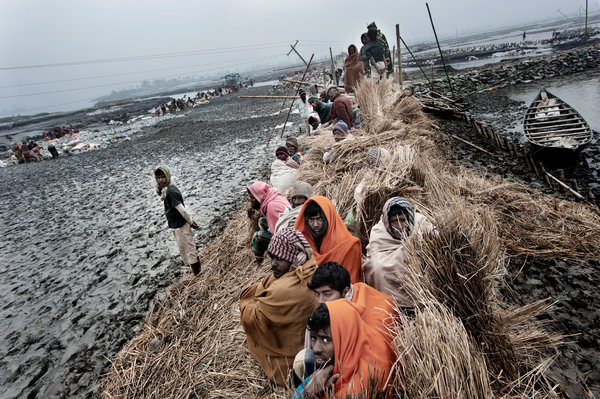



 De wereld is nog lang niet klaar voor klimaatverandering. Desalniettemin zijn de gevolgen van klimaatverandering reeds op alle continenten voelbaar. Dat concludeert het IPCC in een nieuw rapport. In het rapport ‘
De wereld is nog lang niet klaar voor klimaatverandering. Desalniettemin zijn de gevolgen van klimaatverandering reeds op alle continenten voelbaar. Dat concludeert het IPCC in een nieuw rapport. In het rapport ‘ Door toedoen van klimaatverandering krijgt bijna een derde van de aardse landmassa’s tegen het jaar 2100 te maken met droogte. Dat blijkt uit een nieuw onderzoek. De schatting valt een stuk hoger uit dan eerdere schattingen: eerder voorspelden onderzoekers dat 12 procent van de landmassa’s tegen 2100 te maken krijgt met droogte. Dat verschil is goed te verklaren. Tijdens eerdere onderzoeken keken wetenschappers enkel naar de regenval. Tijdens dit onderzoek hielden de onderzoekers ook rekening met warmere temperaturen die ervoor zorgen dat er meer vocht aan de grond onttrokken wordt. Zo komen ze uit op hun conclusie dat dertig procent van de landmassa’s te maken krijgt met droogte. Zelfs gebieden die naar verwachting in de toekomst meer regen krijgen, kunnen door de stijgende temperaturen en daarbij horende verdamping met droogte te maken krijgen. Verdamping “We weten van de basale fysica dat warmere temperaturen ervoor zorgen dat dingen uitdrogen,” stelt onderzoeker Benjamin Cook heel simpel. “Zelfs als de mate van neerslag in de toekomst onduidelijk is, zijn er goede redenen om ons zorgen te maken over de watervoorraad.”
Door toedoen van klimaatverandering krijgt bijna een derde van de aardse landmassa’s tegen het jaar 2100 te maken met droogte. Dat blijkt uit een nieuw onderzoek. De schatting valt een stuk hoger uit dan eerdere schattingen: eerder voorspelden onderzoekers dat 12 procent van de landmassa’s tegen 2100 te maken krijgt met droogte. Dat verschil is goed te verklaren. Tijdens eerdere onderzoeken keken wetenschappers enkel naar de regenval. Tijdens dit onderzoek hielden de onderzoekers ook rekening met warmere temperaturen die ervoor zorgen dat er meer vocht aan de grond onttrokken wordt. Zo komen ze uit op hun conclusie dat dertig procent van de landmassa’s te maken krijgt met droogte. Zelfs gebieden die naar verwachting in de toekomst meer regen krijgen, kunnen door de stijgende temperaturen en daarbij horende verdamping met droogte te maken krijgen. Verdamping “We weten van de basale fysica dat warmere temperaturen ervoor zorgen dat dingen uitdrogen,” stelt onderzoeker Benjamin Cook heel simpel. “Zelfs als de mate van neerslag in de toekomst onduidelijk is, zijn er goede redenen om ons zorgen te maken over de watervoorraad.”






























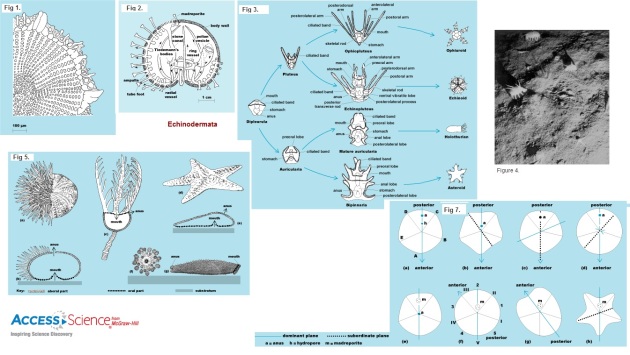







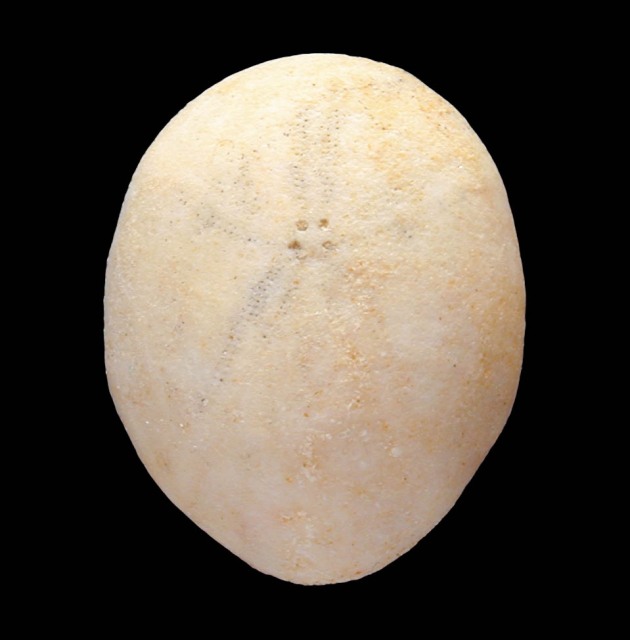



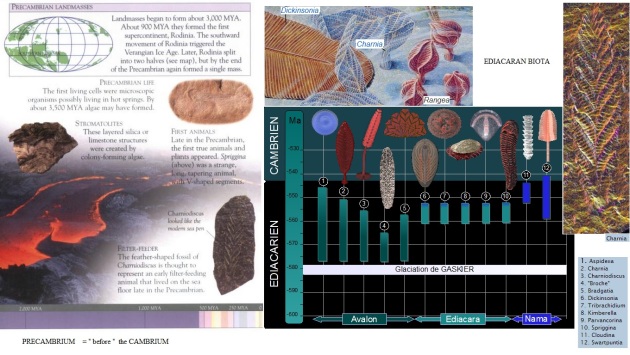




 Losse tanden worden vaak gevonden
Losse tanden worden vaak gevonden Goed bewaarde complete specimens, zoals deze uit Libanon, zijn uitzonderlijk
Goed bewaarde complete specimens, zoals deze uit Libanon, zijn uitzonderlijk




 Kokerworm als epibiont op een
Kokerworm als epibiont op een 
 . De wetenschappelijke soortnaam sugereert dat er sprake is van parasitisme, maar het is eerder mutualisme. De anemoon biedt bescherming en profiteert zelf van voedselresten. Soms probeert ze levende krabben te verschalken; krabben jagen soms ook op zeeanemonen.
. De wetenschappelijke soortnaam sugereert dat er sprake is van parasitisme, maar het is eerder mutualisme. De anemoon biedt bescherming en profiteert zelf van voedselresten. Soms probeert ze levende krabben te verschalken; krabben jagen soms ook op zeeanemonen.








 anomura (germany )
anomura (germany )

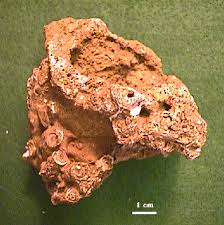

































 Modern dinoflagallates, found off the shore of South Africa, viewed by light microscopy.
Modern dinoflagallates, found off the shore of South Africa, viewed by light microscopy.

 Digoflagellate
Digoflagellate

































 Baculites are of the class cephalopoda, which means, “head-foot”. Almost oval, their ornamentation consists of ribs and tubercles. Only the very earliest part of the shell remained coiled. The latter part grew into a straight shaft. Baculites can occur in vast numbers at some localities, often to the virtual exclusion of other species and could grow to over 39 inches in length. The mode of life of these straight ammonites is controversial. Some paleontologists believe that they lived upright in the water, with the tentacles on the seabed foraging for food. Others feel that they had horizontal orientation and lived nearer the surface of the sea. .
Baculites are of the class cephalopoda, which means, “head-foot”. Almost oval, their ornamentation consists of ribs and tubercles. Only the very earliest part of the shell remained coiled. The latter part grew into a straight shaft. Baculites can occur in vast numbers at some localities, often to the virtual exclusion of other species and could grow to over 39 inches in length. The mode of life of these straight ammonites is controversial. Some paleontologists believe that they lived upright in the water, with the tentacles on the seabed foraging for food. Others feel that they had horizontal orientation and lived nearer the surface of the sea. .









 Graphic: 1903 illustration by Franz Nopcsa showing Bavarisaurus in the stomach region of Compsognathus, public domain, from Wikipedia. MAK101106 __________________________________________________________________________________________________
Graphic: 1903 illustration by Franz Nopcsa showing Bavarisaurus in the stomach region of Compsognathus, public domain, from Wikipedia. MAK101106 __________________________________________________________________________________________________








 Fig. 305. Belemnite restored: a, cephalic tentacles; b, siphon; e, ink-bag; d, e, section of shell. The outline exhibits the fin-like expansions of the integument. Read more:
Fig. 305. Belemnite restored: a, cephalic tentacles; b, siphon; e, ink-bag; d, e, section of shell. The outline exhibits the fin-like expansions of the integument. Read more: 
 Fig. 53.—Different views of Bellerophon Argo, Trenton Limestone, Canada. (After Billings.)
Fig. 53.—Different views of Bellerophon Argo, Trenton Limestone, Canada. (After Billings.) 
 The conditions of benthic organisms, especially the burrowing forms (infauna), are sessile and therefore, indicative of time-integrated effects of various kinds of environmental stress. Since relatively sessile, the status of well being of Marine Benthic Communities can be used to reflect environmental conditions, e.g., eutrophication, or effects of man-made perturbations, e.g., dredging operations. Soft sediments support a wide range of community types and standing crops, and have long been recognized as valuable feeding areas as they are major food source for demersal fisheries. Some of the benthic species are unique and of particular conservation value.
The conditions of benthic organisms, especially the burrowing forms (infauna), are sessile and therefore, indicative of time-integrated effects of various kinds of environmental stress. Since relatively sessile, the status of well being of Marine Benthic Communities can be used to reflect environmental conditions, e.g., eutrophication, or effects of man-made perturbations, e.g., dredging operations. Soft sediments support a wide range of community types and standing crops, and have long been recognized as valuable feeding areas as they are major food source for demersal fisheries. Some of the benthic species are unique and of particular conservation value.  The cephalochordate Branchiostoma belcheri (Amphioxidae) found in sandy seabed in Hong Kong, for example, is regarded as a living fossil link in the evolution of marine invertebrates to vertebrates.
The cephalochordate Branchiostoma belcheri (Amphioxidae) found in sandy seabed in Hong Kong, for example, is regarded as a living fossil link in the evolution of marine invertebrates to vertebrates.




















 Fig.54. a: Nucula strigilata GOLDFUSS, Trias, Tirol Gezien het grote aantal soorten noemen we weer slechts enkele zeer bekende voorbeelden: Nucula. Devoon – recent. Behoort tot de orde der Paleotaxodonta.Klein, ovaal. Massaal in Oligocene klei in Limburg, de Nuculaklei, o.a. ontsloten bij Kleine-Spauwen bij Tongeren in België. Ook in de Septariënklei uit het Oligoceen van Twente en de Achterhoek.
Fig.54. a: Nucula strigilata GOLDFUSS, Trias, Tirol Gezien het grote aantal soorten noemen we weer slechts enkele zeer bekende voorbeelden: Nucula. Devoon – recent. Behoort tot de orde der Paleotaxodonta.Klein, ovaal. Massaal in Oligocene klei in Limburg, de Nuculaklei, o.a. ontsloten bij Kleine-Spauwen bij Tongeren in België. Ook in de Septariënklei uit het Oligoceen van Twente en de Achterhoek.







.jpg)








 breccia
breccia





 °
°


 –> Nederlands
–> Nederlands  –> English
–> English 



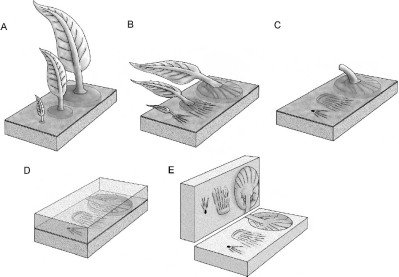

 _________________________________________________________________________________________________
_________________________________________________________________________________________________
































































































.jpg)






























 Photo and Graphic combined to show paleocurrent direction
Photo and Graphic combined to show paleocurrent direction 




.jpg)

.jpg)

























 Image Courtesy of Marli Miller, University of Oregon
Image Courtesy of Marli Miller, University of Oregon


































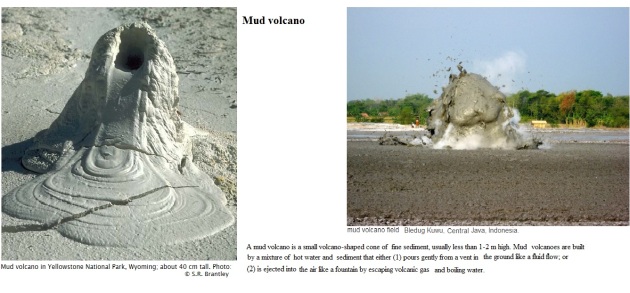
























 Orthoklaas
Orthoklaas



Recente reacties